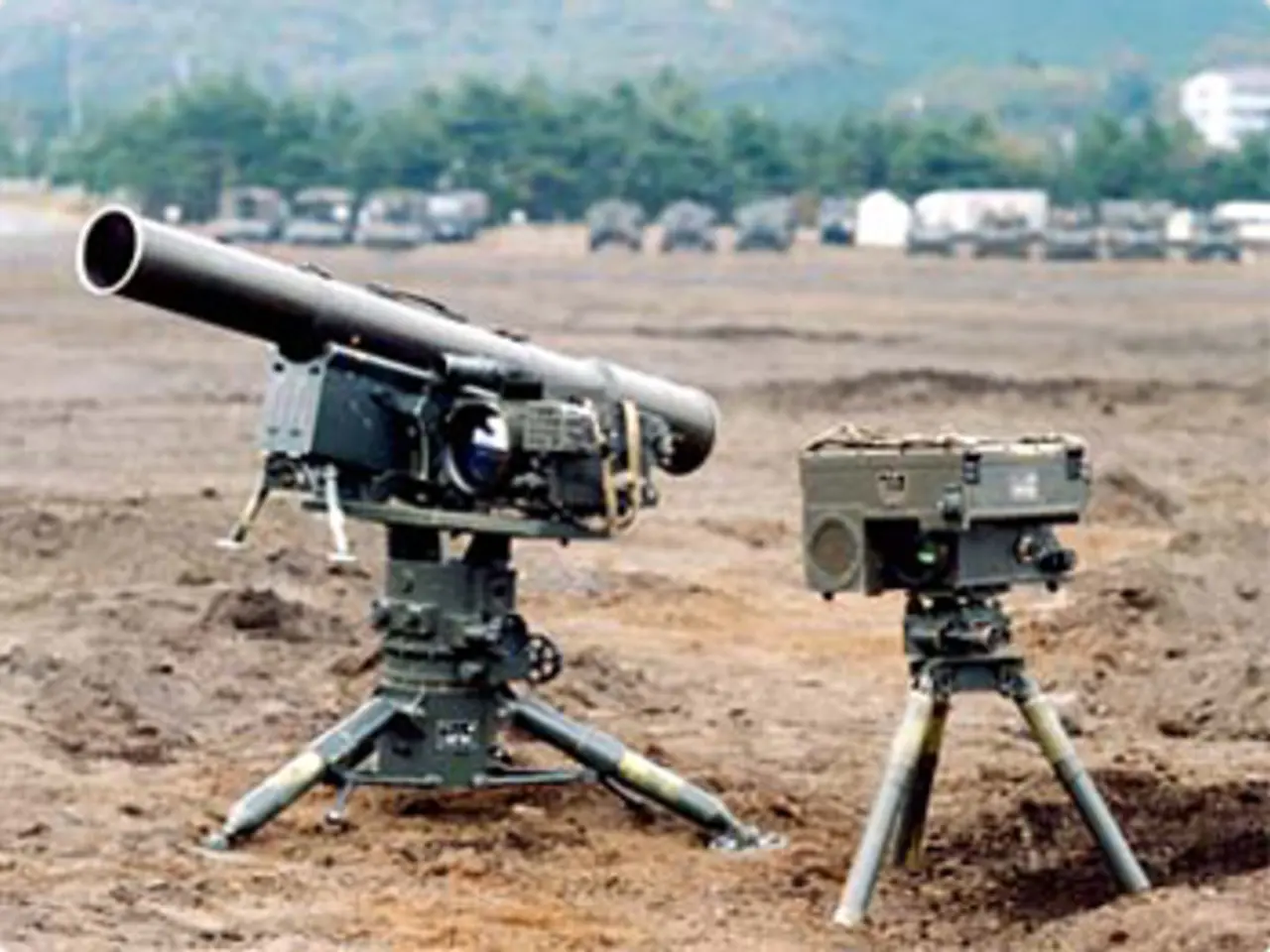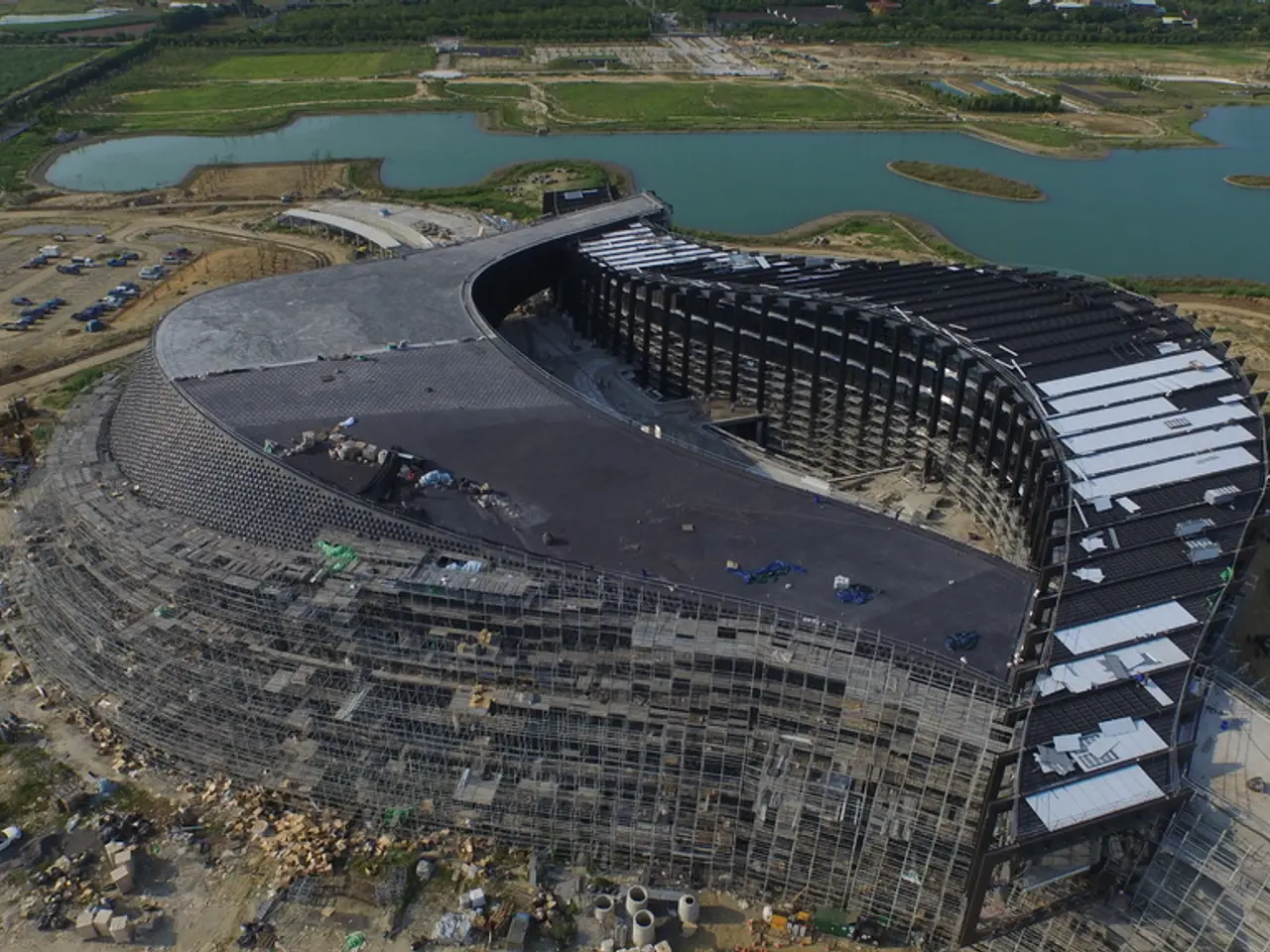Test fire of a high-precision missile with a range of 300 miles, achieving pinpoint accuracy.
The Australian Defense Ministry has announced the successful testing of the Precision Strike Missile (PrSM) system, marking a significant milestone in the country's efforts to enhance its long-range strike capability. This test, conducted at Mount Bundey Training Area in the Northern Territory, was the first operational PrSM firing by a military force outside the United States [1][2].
The Prism missile system, developed by Lockheed Martin, is a next-generation long-range missile designed for launch from systems like the U.S. Army's HIMARS and UK-produced MLRS artillery platforms. It offers a range exceeding 480 kilometers, significantly surpassing the range of its predecessor, the ATACMS missile [3][4].
Key features of the Prism missile system include high speed, electronic resistance, precision targeting, dual launch capability, and interoperability. With speeds around 4,000 km/h, it can rapidly engage targets. Its enhanced resistance to electronic interference ensures reliability in contested environments. The system's precision targeting capability allows it to strike moving targets on land or at sea, improving flexibility and effectiveness in complex battlespaces [3].
Two Prism missiles can be fired from a single HIMARS launcher, increasing firepower per launch vehicle. The Prism missile system's compatibility with U.S. HIMARS and British MLRS artillery systems facilitates use by allied forces [1].
The successful PrSM launch from a High Mobility Artillery Rocket System (HIMARS) was the first time the Army has fired a PrSM from a HIMARS [1]. The test firing is another example of the Albanese Government accelerating long-range strike capabilities for the ADF [2].
Australia and the United States signed a Memorandum of Understanding for PrSM production, sustainment, and follow-on development earlier this year [5]. The delivery of the first PrSM was a year ahead of schedule [6]. The test is a tangible demonstration of how the Australian Army is realising speed to capability [6].
Future missile upgrades will expand the PrSM's capability to include a greater range of over 1000 kilometres, improved sensors, and novel warheads [7]. The PrSM is a new surface-to-surface weapon system that can deliver enhanced capabilities to attack, neutralize, suppress, and destroy targets beyond 300 miles [8].
The successful PrSM test aligns with the Australian Defense Ministry's commitment to delivering on the 2024 National Defence Strategy by acquiring advanced military technologies [1]. The test was attended by the Minister for Defence Industry Pat Conroy and United States Secretary of the Army Daniel Driscoll [9].
The Prism missile system's extended range and enhanced capabilities are particularly crucial in strategic theaters like the Indo-Pacific to counter emerging threats and extend firepower reach [1][2][3][4]. This capability will bolster Australia's attack capability, providing a significant advantage in future military operations.
[1] Australian Defense Ministry press release [2] Australian Minister for Defence Industry statement [3] Lockheed Martin press release [4] U.S. Army press release [5] Joint media release: Australia and the United States [6] Australian Army press release [7] Lockheed Martin press release (future upgrades) [8] Australian Army press release (description of PrSM) [9] Joint media release: Australia and the United States (test attendance)
The Prism missile system, being a next-generation long-range weapon, is a product of innovation at the intersection of science and industry, with its development led by Lockheed Martin. This missile's successful testing by the Australian Defense Force (ADF), in collaboration with the US Army, marks a significant step in financing for future energy-intensive military projects. The Prism's extended range and enhanced capabilities, such as high speed, electronic resistance, precision targeting, and dual launch capability, are crucial in strategic theaters like the Indo-Pacific, offering significant advantages in future military operations and contributing to the ADF's long-range strike capabilities.




